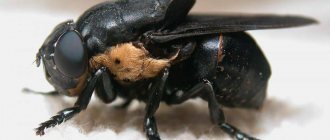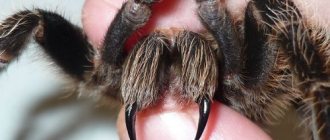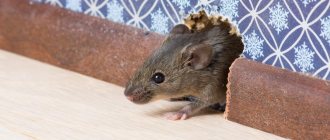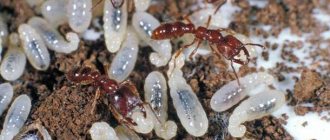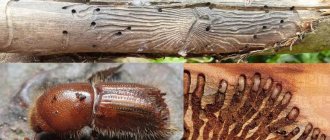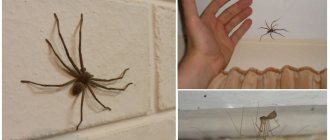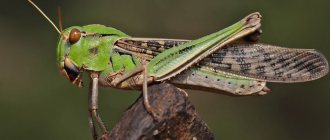Nature has created the most diverse and amazing forms. Some representatives of the animal world are attractive and trustworthy in appearance, while others are frightening and repulsive.
Spiders clearly belong to the second category, and meeting them causes panic horror for most. But appearances are deceiving, and of the 42 thousand species of spiders living on the planet, most are harmless and do not pose a threat to human life and health.
From all the diversity of the arachnid class, let's look at the 10 largest spiders in the world.
10
Nephila
Translated from Greek, the name of this spider is “who loves to weave.” This is not only one of the largest species of spiders, but also weaves the largest web.
The relatively small body, from 1 to 4 centimeters, has legs that in some species reach 12 centimeters in length. The nephila's web is so strong that fishermen in Southeast Asia and Oceania use it as a fishing net.
In the photo: Nephila spider.
Spider venom is toxic, but not fatal to humans. The bite causes pain, redness at the site of the bite, sometimes with blistering.
Nephila edulis
Nephila goldweaver occupies the last place in the ranking among large spiders. This creature can be found in Africa, Asia, South America and Australia. Their home is trees; on the branches they hang strong golden nets up to one and a half meters in diameter. This deadly web is capable of trapping not only insects, but also small birds. The female nephila golden moth has a body of about 4 cm, and its overall size is 13 cm, which is approximately 1.5 times larger than males. The color of the spider is mainly yellow-green with reddish splashes. Its poison is toxic to humans, but does not pose a serious threat.
This is interesting: What species of animals are the rarest on Earth - list, characteristics and photos
Tegenaria wall
Already by the name you can guess that this is one of the types of house spiders. Due to its impressive size, it is often called a giant spider.
In the photo: Tegenaria wall.
The leg span of an adult tegenaria reaches 13 centimeters, but the bizarre curve of the spider makes it seem even larger.
In a dispute over prey, this type of spider can kill its relatives, and abandoned buildings and caves of the African continent and some regions of Asia have chosen their habitat.
8
Locations and hunting methods
Brownie tegenaria weave their webs in dark, remote corners. Only females do this, while males lead a wandering lifestyle. Unlike other types of spiders, their web cannot serve as a trap because it does not contain a sticky substance. The prey becomes entangled in this net, but if it is strong enough, it will be able to get out while the hunter approaches it. Ants, for example, are even capable of desperately fighting a spider and winning, putting it to flight.
Due to the lack of a sticky substance on the web, the spider can only hunt small and weak insects
The spider's house is located behind the web in the corner and looks like a funnel. Thanks to this form of housing, the family to which tegenaria belongs received the name Funnel-shaped. When the spider catches the vibration of prey fluttering in the web, it pounces on it and sinks its fangs. Then he injects a portion of poison, waits for the “delicacy” to reach its proper condition, after which he sucks out the vital juices, leaving an empty shell of the insect. The following can end up on a predator’s table:
- house flies;
- mosquitoes;
- Drosophila fruit flies;
- larvae;
- mealybugs.
It is worth thinking carefully before exterminating Tegenaria domestica
This little uninvited resident brings benefits by destroying annoying parasites that pose a danger to humans.
Brazilian wandering spider
The Guinness Book of Records tells us that this is one of the most dangerous spiders. But besides this, the Brazilian wandering spider is quite large.
The body of the pack reaches 5–7 centimeters, and the span of its legs is 17 centimeters. The diet is very varied. It eats other spiders, birds, small lizards, insects and even bananas. Therefore, they can often be found in boxes where these southern fruits are packaged.
Possessing a terrifying size and dangerous poison, this type of spider will never attack a person first. Therefore, when meeting, it is better to avoid him.
7
Giant baboon spider
Giant baboon spider
This is a huge spider, part of the tarantula family. The leg span of this spider is more than 30 cm. It lives in the forests of the tropics and subtropics and is a burrowing species. Color ranges from dark gray to bright brown. The predator's paws are covered with hairs.
The baboon spider is active at night and its diet includes insects and small vertebrates. It kills its prey by injecting poison. Sensing danger, it rises on its hind legs, pretends to be intimidating and knocks on the ground with its forelimbs, making sounds similar to grinding. The venom of this spider is dangerous to humans.
Cerbal Arabian
The inhabitant of the desert expanses of Jordan and Israel was discovered by zoologists relatively recently; until 2003, the world did not know about its existence.
A spider with a color adapted for life among sands has a paw size of 14 centimeters. But some experts claim that the length of the paws can reach 20 centimeters.
The habitat also determined the lifestyle of the majestic inhabitant of Arabia. During the day, the spider hides from the scorching rays of the sun, and at night it goes out hunting.
6
Baboon spider
The large representative of the arachnids received its name due to the similarity of its long legs with the fingers of a baboon. And the spider’s legs are really impressive, growing up to 30 centimeters, with a body size of 5–6 centimeters.
In the photo: a small specimen of the Tanzanian thick-legged baboon spider.
Because of its habitat, this unusual spider is also called the African tarantula. On the grayish body you can see black dots and stripes that form an original pattern.
Like most members of the arthropod family, baboon spiders are characterized by cannibalism. When bitten, it releases poison, which, when released into a person’s bloodstream, can lead to partial paralysis.
By the way, on thebiggest.ru you can learn about the most poisonous spiders on our planet.
5
Common salpuga
According to a survey conducted in the United States, the common salpuga is considered the most creepy and disgusting spider in appearance. It can be found in Central Asia, in the desert and open areas of North and South America.
In fact, salpuga (bihorca or phalanx) is not an arachnid. It was classified in this category of arthropods only because of the presence of chelicerae and the structure of its legs. The ends of the legs are equipped with mini-claws, with which they grab the victim and hold them until the poison begins to act.
All representatives of the common salpuga are characterized by increased aggression. Moreover, they show it not only in relation to the enemy, but also towards each other. Phalanges are especially dangerous during the mating season. The female spider can attack at any time and attack with her legs, even if no one touched her.
Today, science knows more than a thousand varieties of common salpug. The largest representatives of this species are the harvester Phalangida. The size of its body exceeds 10 centimeters, but it cannot boast of long legs. They are very short but powerful. The smallest spider from the salpug family is Chelypus eberlanzi. It is three times smaller than the Phalangida harvestman.
Colombian purple tarantula spider
The spider, whose body size reaches 8–10 centimeters, lives in the tropical rainforests of Latin America. It belongs to a group of rare spiders.
Due to their original color and peculiar hairiness, they are often kept at home as a pet, but their habits are quite aggressive, and one must be careful, since contact with the hairs can cause an allegorical reaction.
It feeds on mice, frogs, and insects, hunting its victims from cover.
4
A giant among hunting spiders lives in the tropics of Laos
4They got their name Hunter/Huntsman spider for their lightning-fast attack and quick reaction. There are about 1090 species of these “babies”, the size of the palm of an adult. They love countries with a humid tropical climate: South Africa, Australia.
Hide and seek game lover
Favorite places to play hide and seek: the bark of dead trees, stumps, cracks in rocks and walls.
They are absolutely harmless to people. Preferring to eat insect pests: cockroaches, crickets and beetles. They do not weave webs, but rely on their instant reaction and poison to immobilize the victim. A dose of such poison is not dangerous to humans.
Phalanx
The habitat of this amazing spider stretches from the Iberian Peninsula to the Gobi Desert. It is correct to call these arachnids, which number about 1 thousand species, salpuga, which literally translates as “running away from the sun.”
The size of the phalanges, reaching a length of 5–8 centimeters, placed them among the largest arachnids on our planet. Large individuals are capable of biting through human skin, and chelicerae, which do not have poison, can lead to blood poisoning when bitten.
3
Camel spider
Camel spider
Phalanges, bihorci or salpugi - belong to the order of phalanges of the arachnid class. The span of the legs of these phalanges can reach 30 cm, the body length is 5-8 cm. The brownish body and limbs are covered with hairs, in front there are tentacles similar to legs
Camel spiders go hunting at night, their menu is varied: beetles, lizards, mice, chicks and many other animals. They live in the deserts of all continents except Australia.
Phalanxes are capable of running at speeds of up to 2 km/h, which is why they are also known as the Wind Scorpion. They differ in that during defense they emit an unpleasant squeak.
Salmon pink tarantula spider
Another member of the large family of tarantulas, and one of the few that people keep as pets.
They have a truly gigantic furry abdomen that grows 10 centimeters and a paw span of up to 30 centimeters. This tarantula also has an original color, black in the center gradually turning into gray at the ends of the legs.
The spider defends itself with stinging hairs, so you need to be careful to avoid allergic reactions.
2
Giant crab spider
A paw span of 25 centimeters allows the crab spider to easily climb trees and crawl into the most secluded crevices. The legs of the hunting spider are curved, which is why it received such an unusual name.
The habitat of this giant among arachnids is the forests of Australia, where it likes to hide under stones or the bark of mighty trees. Due to the peculiar structure of its legs, it can move not only forward, but also quite quickly - to the side.
An interesting fact about the habits of the crab spider is that the female selflessly, like a fighter, protects the clutch and offspring.
1
The largest spiders in the world
Many arachnids are large in size. But they are often less poisonous than smaller arachnid species.
The largest spider in the world in history is Heteropoda maxima. The span of his legs is 30 centimeters.
In addition to Theraphosa blondi and Heteropoda maxima, other species are also considered large. These are the giant hunter, the black Brazilian tarantula, the horse or camel spider, the wall tegenaria, and the Hercules baboon.
Goliath tarantula
Theraphosa blondi is the largest spider in the world. The size of the tarantula is about 28 centimeters. Goliath is distinguished by a considerable paw span of 18 cm. The length of its body is 10 cm.
The large tarantula preys on lizards, mice, small snakes or toads. Theraphosa blondi venom does not pose a mortal danger to humans.
Goliath lives in South America. These are Brazil, Venezuela, Suriname, Guyana.
It is noteworthy that the female tarantula lives 10-25 years. The lifespan of a male is much shorter and is 3-5 years.
You can find out what the largest spider in the world looks like by carefully examining the goliath. The color of the arthropod varies from light to dark brown.
Its body is covered with a durable shell made of chitin, and its head is protected by a frame, on the front of which there are 4 pairs of eyes. The large goliath has 6 pairs of paws. Venom glands are located on the front pair of limbs.
Giant spider hunter
Another big spider in the world is the giant hunter. The size of the insect's limbs is 25 centimeters.
Heteropoda maxima lives in Asia and Australia. The giant spider chooses hard-to-reach places to live, for example, a cave. The hunter feeds on harmful insects.
The color of Heteropoda maxima is yellow-brown. He has a couple of dark spots on his chest. Females are slightly larger than males.
Horse spider
The “large spiders” category also includes Lasiodora parahybana. The species is called equine due to its enormous size, reaching 25 cm.
Males have an elongated body. Females are larger, weighing up to 100 grams. Body color is red-brown or black-gray. The body of a large predator is covered with dark reddish hairs.
Lasiodora parahybana lives in eastern Brazil in tropical forests. The venom of the horse predator is moderately toxic.
But after being bitten, some people may experience complications, such as allergic reactions.
Brazilian black tarantula
Grammostola pulchra is a fairly large spider. Its body size reaches 15 cm.
The lifespan of a female is up to 20 years. The tarantula lives in Uruguay or Brazil.
Grammostola pulchra feeds on small insects, mice or lizards. The Brazilian tarantula is distinguished by its black charcoal color with a blue tint.
The large predator has hairs on its body that cause allergic reactions in humans who touch them.
Hercules baboon
The large arachnid got its name due to the resemblance of its limbs to the fingers of a baboon. The body length of the female is 11 cm, the male is 6 cm. The span of the limbs is 13 cm. With good nutrition, the size of the abdomen is about 4 cm wide and 6 cm long.
Color – brown, red or golden. The body has smooth and soft hairs.
The large Hercules baboon lives in African countries. These are Nigeria, Benin, Niger, Cameroon.
Baboon venom is quite toxic. Therefore, after its bite, poisoning occurs.
The following symptoms are characteristic of intoxication:
- regurgitation;
- pain;
- nausea;
- paresthesia;
- fever.
Camel spider
Another large spider is the salpuga. Its body size reaches 50-70 mm.
This type of arachnid has its own characteristics. The predator is called a camel because of the presence of long legs. Externally, the bihorka looks like an insect or scorpion. The phalanx is characterized by aggressive behavior. She runs fast and jumps high, making a terrifying sound in pursuit of her prey.
The body color of the large phalanx can be sandy, brown, yellow, or variegated. The head and chest are dismembered. Powerful and long limbs are attached to the body. In total, the salpuga has 8 pairs of legs.
Camel arachnids live in steppes and deserts with a hot climate. This is China or Iraq. Phalanges are slightly poisonous and rarely attack people.
But if they bite the victim, there is a possibility of infection of the wound, where cadaveric poison can enter. After all, the bihorca often eats up rotting remains.
Tegenaria wall
Another large species of arthropod on earth is Tegenaria. It is also called the house spider, as it loves to climb into homes and sit on walls. This type of arachnid is not dangerous for humans. After all, it feeds mainly on insects.
The animals have a leg span of up to 13 cm. Teganaria runs quickly over short distances.
Cannibalism is common among this type of arachnid.
The habitat of wall tegenaria is Asia and Africa. They choose caves or abandoned houses for housing.
Video
The largest spiders in the world / TOP 10
Goliath tarantula
The impressive size of the spider determined its formidable and powerful name. The Goliath tarantula is rightfully the largest spider in the world.
Thirty-centimeter legs and a massive furry body will impress even the bravest daredevils.
The largest spider in the world chose the green thickets of the tropical forests of the South American continent as its habitat. Ambushing its prey, the spider plunges its sharp fangs deep into it.
The spider's diet includes insects, amphibians, and certain types of snakes, but it does not eat birds, although it bears that specific name.
Below you can watch an amazing video of this beautiful and huge spider.

